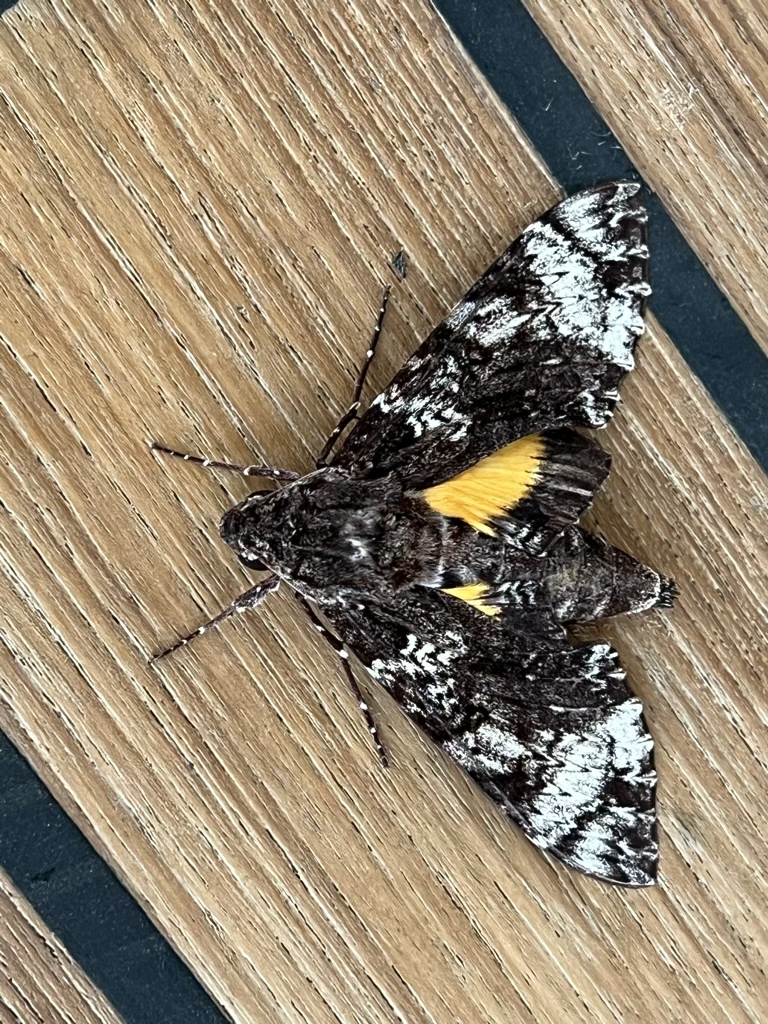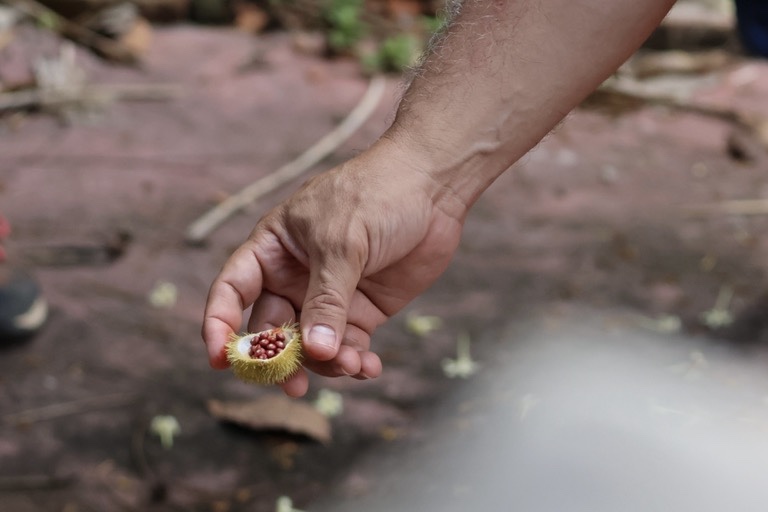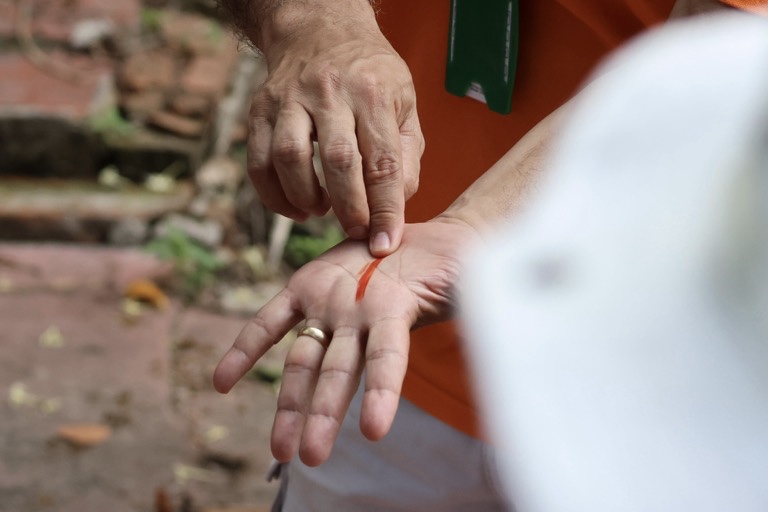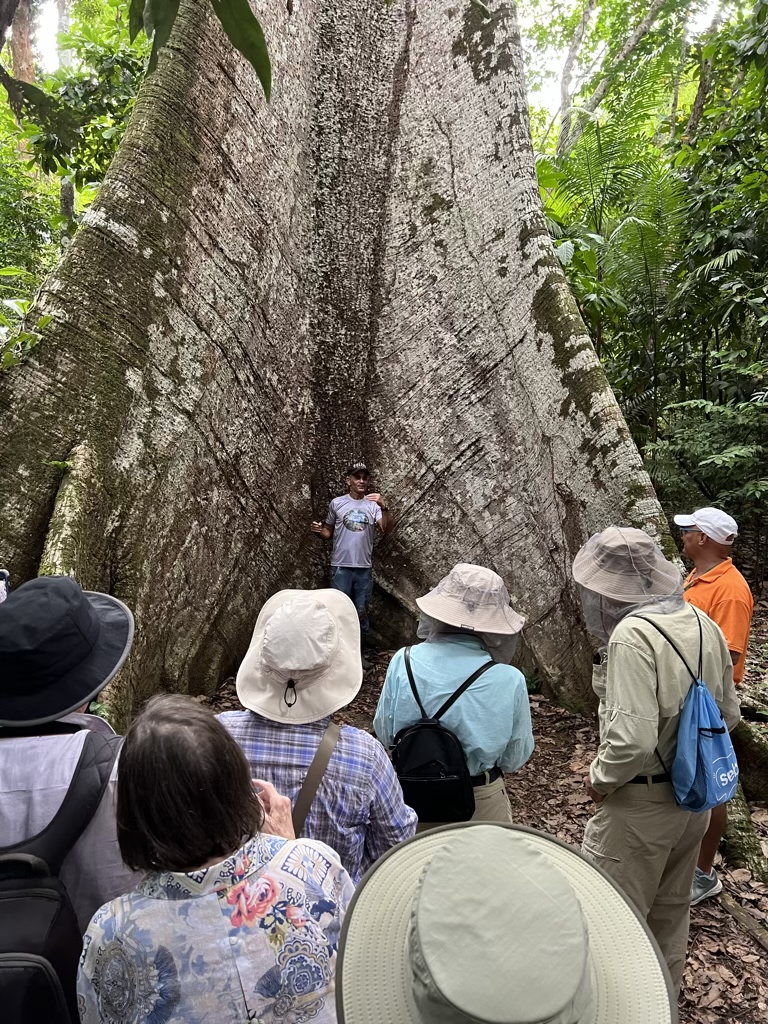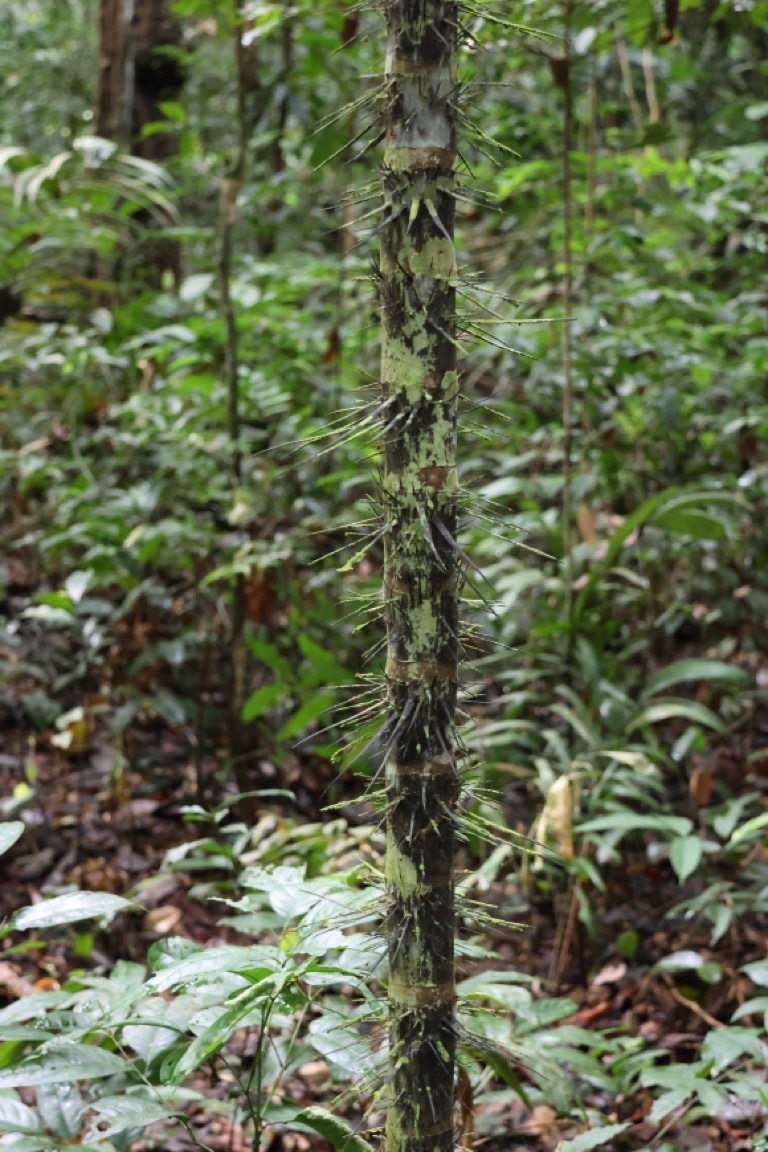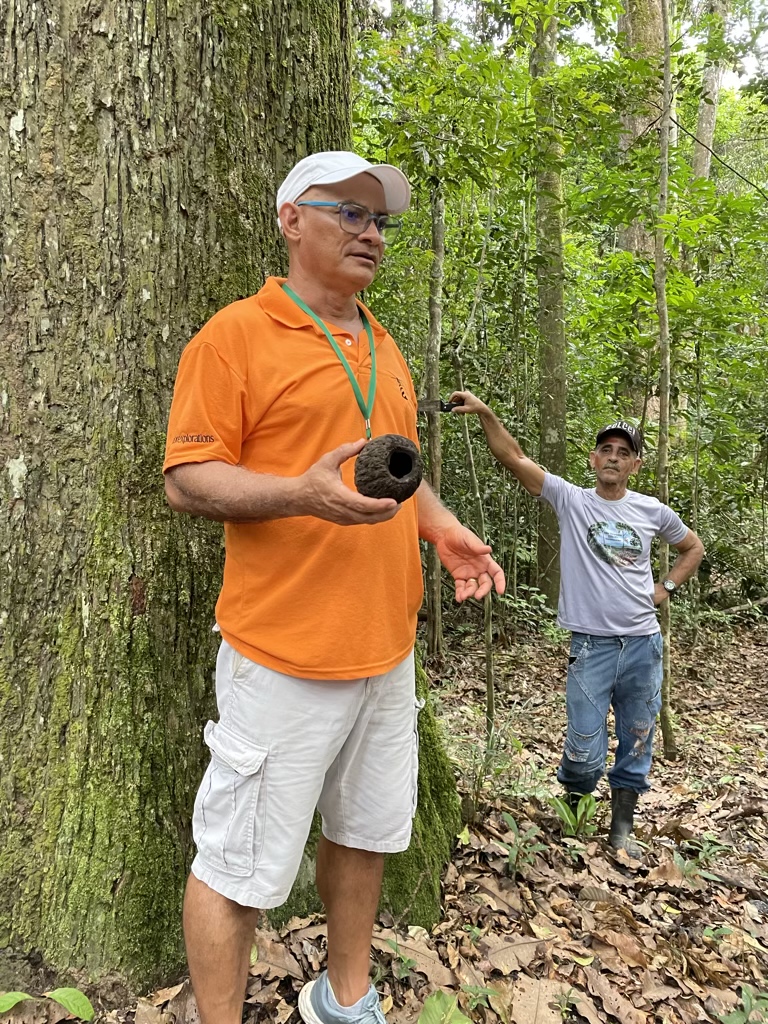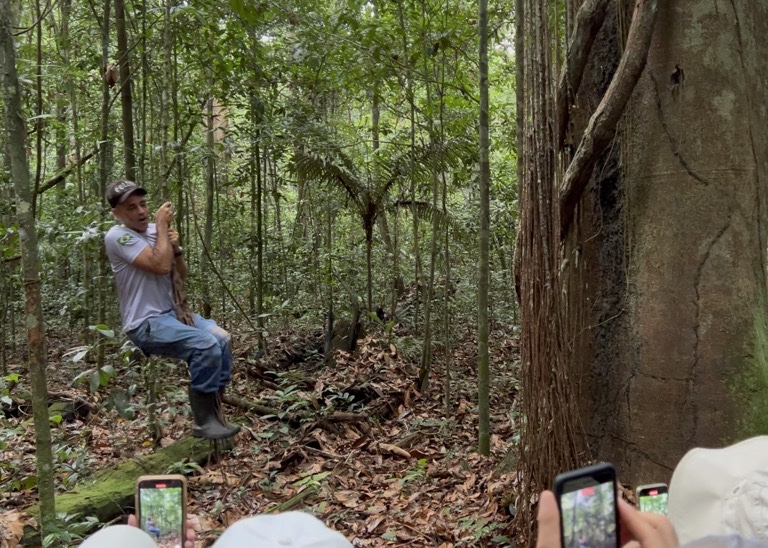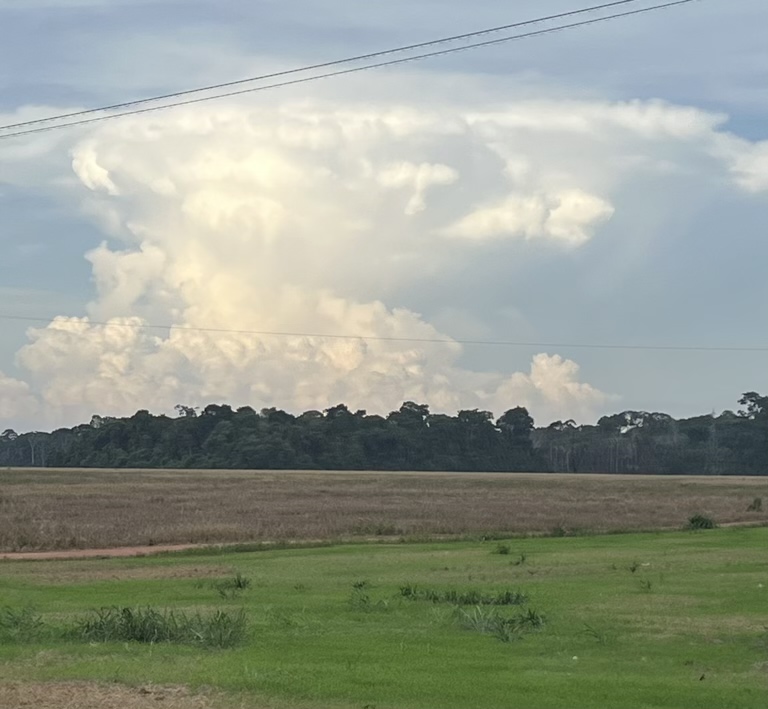on
Santarém
Santarém is close to our halfway point going up the Amazon.
Another moths
Some logs headed downstream.
We took a tour over to the Tapajós National Rain forest. It was raining as we pulled into the forest entrance, but there was a 20-minute drive into the forest after we picked up our indigenous guide at the entrance, and the rain ended by the time we got out.
The tour was mainly about how the indigenous peoples used the various trees and plants to survive. When our bus pulled into the forest entrance, we picked up an indigenous guide for our tour. His name was Noctura.
This fruit was used as body paint.
The rubber tree is native to the Amazon, and was later smuggled out to southeastern Asia to break the rubber baron monopolies in Amazon basin. There is a proper way to score the rubber tree to not kill it.
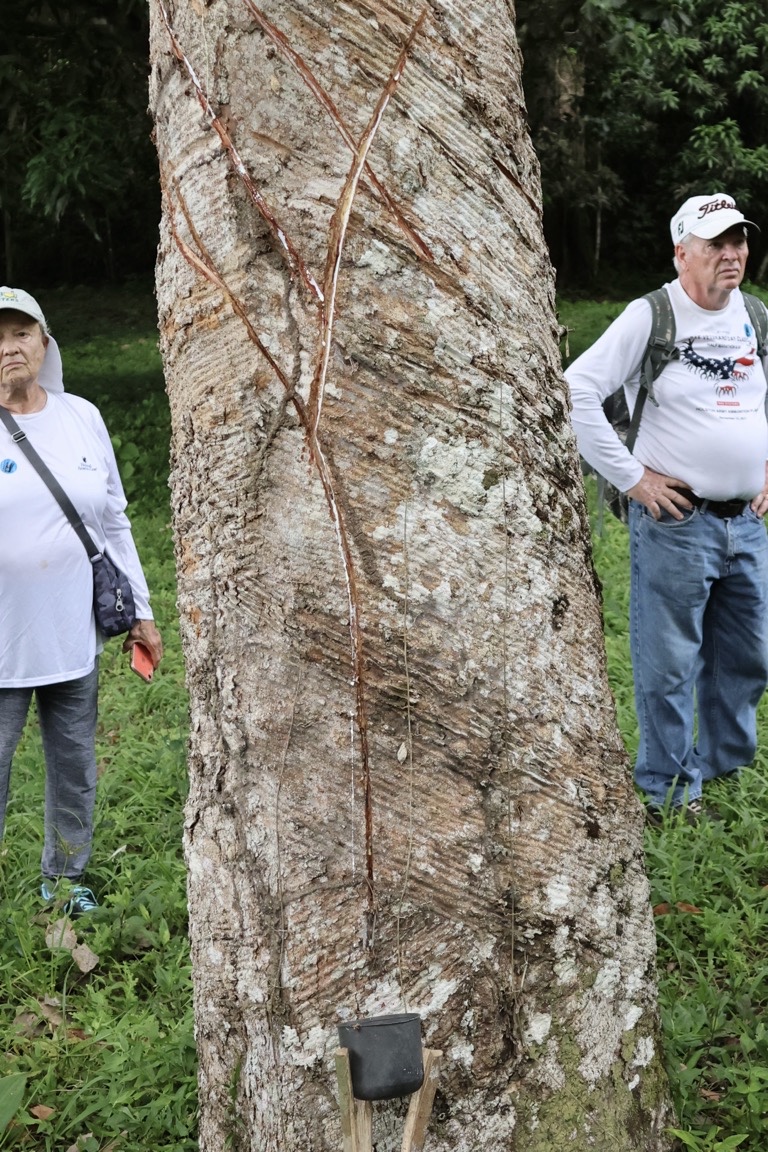
This tree was used for shelter and to communicate over long distances. Beating the thin root braces reverberates in the forest. The deep sound carries in the jungle.
Walking through the rain forest means climbing over downed trees and vines. But there are trees you should not grab to steady yourself.
The Brazil nut husk is really tough, it holds several nuts inside.
The bark of a certain tree was used as rope for carrying a carcass home. It could be easily cut off in strips and braided into a rope.
There is a vine that holds lots of water much like a baobab tree. A two-foot long section of the vine held over a cup of water.
The indigenous peoples used sap, bark and leaves as medicines. Drinking the sap directly, or making a tea from the bark or leaves.
They also used some insects. There was a species of ant that when crushed let off a sweet aroma much like a perfume when it was crushed and rubbed on the skin.
You have to have fun in the jungle as well. Noctura swinging on a vine.
It was about an hour and a half drive out there and then back. During the trip back, we saw this huge cumulonimbus.
